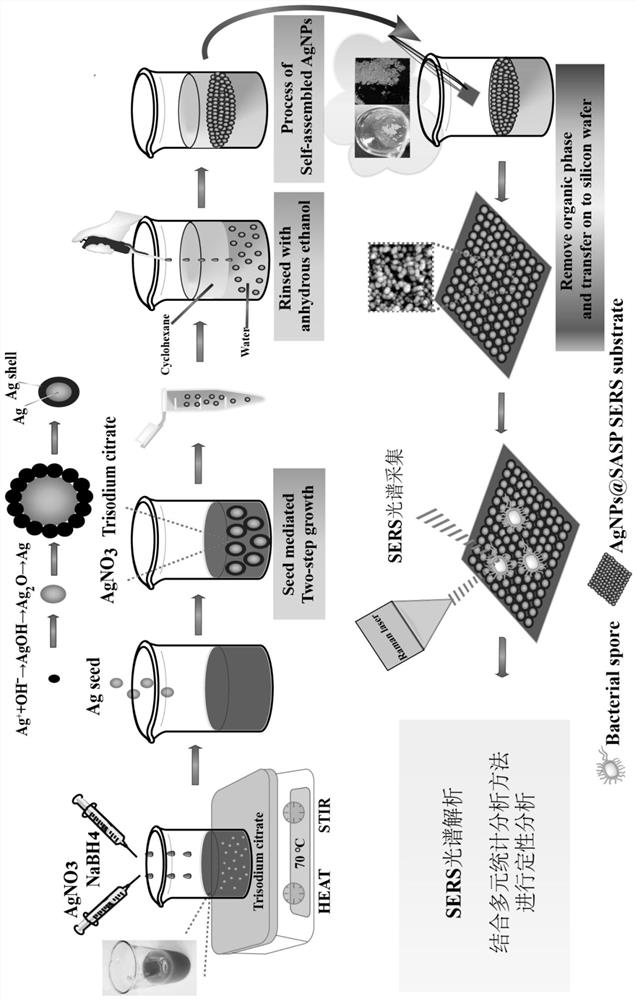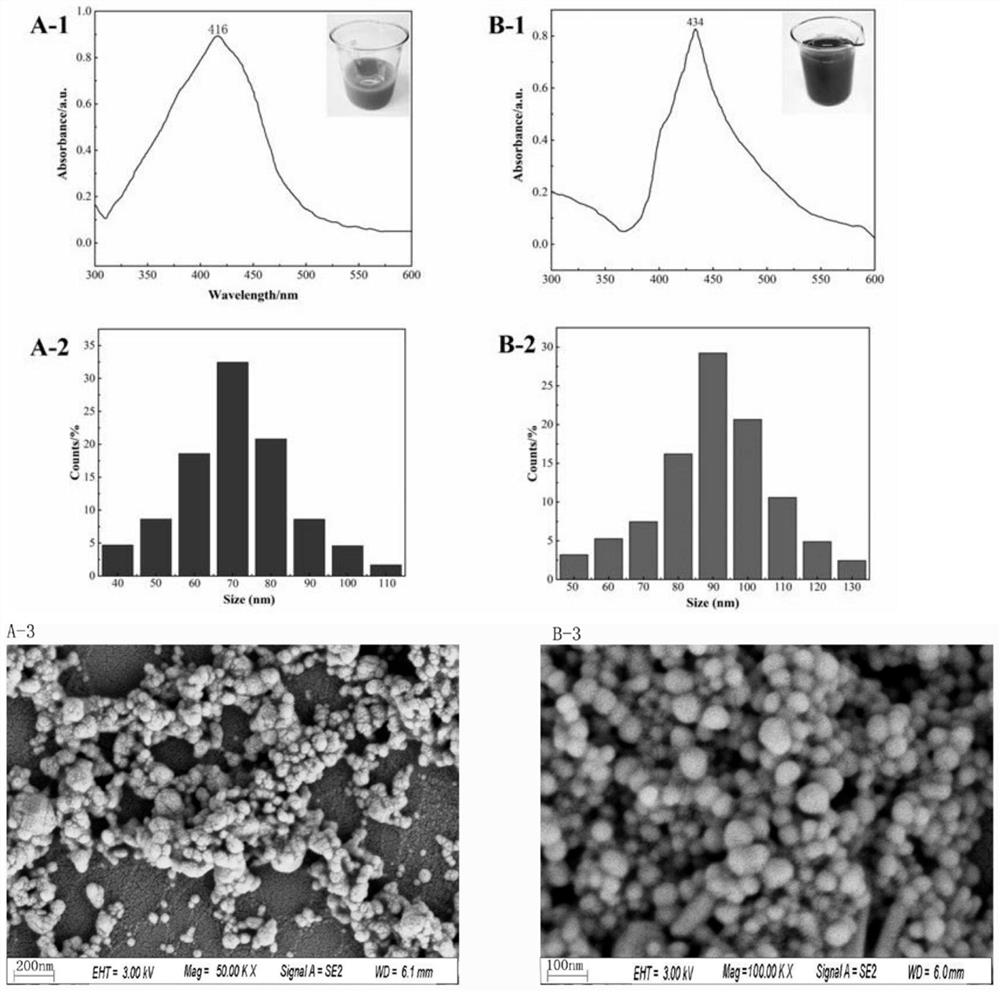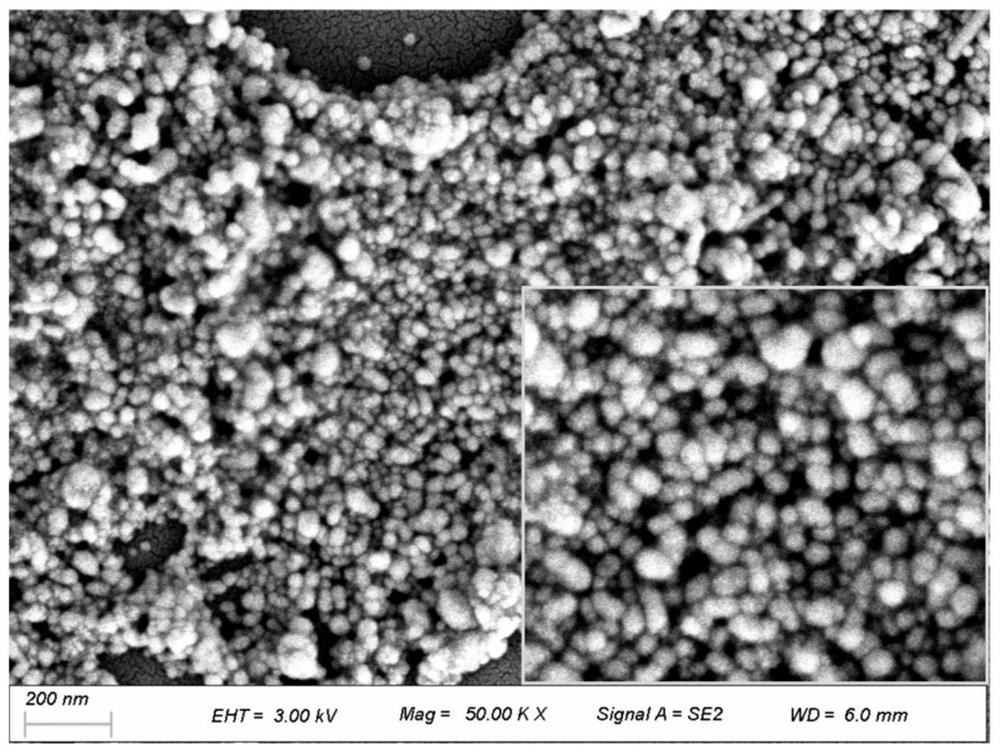Preparation method and application of AgNPs (at) SASP substrate material
A base material and seed technology, applied in the field of nanomaterials, can solve the problems of expensive preparation, affecting the stability and reproducibility of SERS test results, and surface uniformity, and achieve the effect of ensuring food safety.
- Summary
- Abstract
- Description
- Claims
- Application Information
AI Technical Summary
Problems solved by technology
Method used
Image
Examples
Embodiment 1
[0038] The preparation method of the AgNPs@SASP base material of the present embodiment is as follows:
[0039] (1) Preparation of AgNPs by seed-mediated secondary growth method
[0040] a. Add 75ml of ultrapure water to 20ml of trisodium citrate with a mass fraction of 1%, heat in a round bottom flask for 15min at 70°C, and add 1.7ml of AgNO with a mass fraction of 1% to the mixture 3 solution. Then quickly add 2ml of 0.1% NaBH 4 The solution reaction solution was stirred at 70°C and then cooled to room temperature, and water was added to a volume of 100 ml to obtain the starting seed solution of AgNPs.
[0041] b. Add 75ml of water and 2ml of 1% trisodium citrate solution into a 100mL round-bottomed flask, and then add 10mL of the prepared AgNPs starting seed solution and 1.7ml of 1% AgNO at a constant speed. 3 solution, and kept stirring the mixture vigorously for 1h, this step was repeated twice (that is, after cooling to room temperature, 2ml of 1% trisodium citrate aqu...
PUM
 Login to View More
Login to View More Abstract
Description
Claims
Application Information
 Login to View More
Login to View More - R&D
- Intellectual Property
- Life Sciences
- Materials
- Tech Scout
- Unparalleled Data Quality
- Higher Quality Content
- 60% Fewer Hallucinations
Browse by: Latest US Patents, China's latest patents, Technical Efficacy Thesaurus, Application Domain, Technology Topic, Popular Technical Reports.
© 2025 PatSnap. All rights reserved.Legal|Privacy policy|Modern Slavery Act Transparency Statement|Sitemap|About US| Contact US: help@patsnap.com



